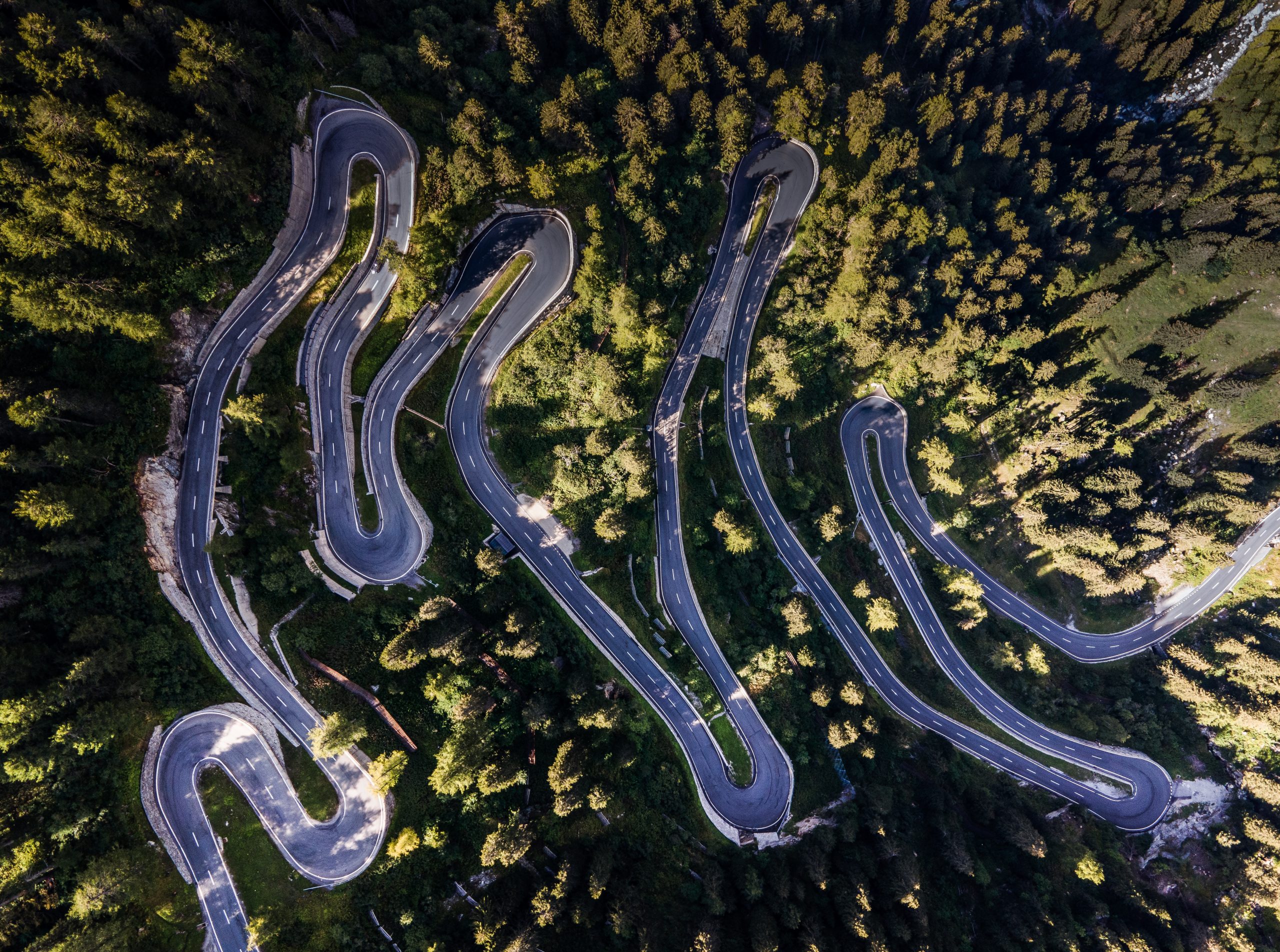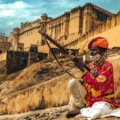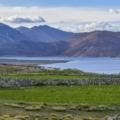Top Motorable Mountain Passes In India: Best time to visit & how to get there

Road trips are sure fun, especially during the monsoon season, journeying through the winding roads and the mountains is paradisaical. When road-tripping through the hills, mountain passes are an important part of the journey and are simply unmissable. Mountain passes in India are carved through rugged terrains and towering peaks, that not only offer breathtaking views but also a glimpse into the resilience and grandeur of nature. From the snow-capped Himalayas to the winding roads and beyond, mountain passes have long captured the imagination of explorers and adventurers. Discover the allure of these gateways to the sky and unlock the secrets they hold, from ancient trade routes to modern feats of engineering.
What is a mountain pass?
Why should you visit a mountain pass in India?
Things to keep in mind
Marsimik La
Umling La
Khardung La
Dungri La
Kaksang La
In this Blog
What is a mountain pass?
First things first, let’s begin with the basics. What exactly is a mountain pass? Well, mountain passes are nothing but ridges or unpaved roads that go through a mountain range, allowing travellers to cross over from one side to the other. It is a natural or man-made gap in the mountains, typically formed by erosion from rivers, glaciers, or tectonic activity. Mountain passes vary in terms of their width, elevation, and difficulty level.
The major mountain passes often serve as important links between different regions, providing a means for people, vehicles, and sometimes even animals to traverse through mountainous terrains. They have played a significant role in human history, enabling trade, migration, and cultural exchange between geographically separated areas.

Why do people visit mountain passes in India?
Mountain passes attract people for various reasons. Mountain passes provide a gateway to outdoor recreation, enticing adventure enthusiasts with activities like hiking, trekking, mountain biking, skiing, and snowboarding. The challenging terrains and unpredictable weather conditions add an element of thrill and excitement for those seeking an adrenaline rush.
Moreover, some major mountain passes in India hold cultural and historical significance, drawing individuals interested in learning about their past and experiencing the cultural heritage associated with them. There are so many motorable mountain passes in India that entice travellers seeking solace and tranquillity amidst the serene environment.
Furthermore, the captivating landscapes of mountain passes serve as inspiration for photographers, artists, and nature enthusiasts, allowing them to capture stunning visuals or create artistic masterpieces. Finally, these often serve as transit points, attracting road trippers and travellers who appreciate scenic drives and the opportunity to explore diverse regions.
Why are mountain passes in India important?
Mountain passes in India hold great importance for various reasons. Firstly, they have historically served as vital trade routes, connecting regions and facilitating the exchange of goods, ideas, and cultures. These passes often provided the only feasible means of crossing formidable mountain ranges, enabling trade and commerce to flourish. From the Silk Road in Central Asia to the ancient mountain passes of the Alps and the Himalayas, these routes have shaped civilizations, influenced economies, and fostered cultural interactions between distant lands.
Mountain passes have significant military significance. Their strategic locations and challenging terrain make them natural barriers, offering advantages in defensive positions. Control over key mountain passes has been pivotal in many historical conflicts, as they offer control over access points and can limit the movement of opposing forces. Military installations, fortifications, and even ancient castles can be found along strategic mountain passes, reflecting their historical and ongoing importance in military strategies.
Things To Keep In Mind
The journey to a mountain pass entails navigating through a challenging road that demands skilled driving, owing to its steep inclines, sharp bends, and narrow stretches. Therefore, it is strongly advised that inexperienced drivers or those susceptible to altitude sickness avoid this route. So fasten your seatbelts, brace yourself for an adrenaline rush, and as you venture into the heart of these majestic highways, exploring the wonder and majesty of mountain passes.
Marsimik La – Highest Motorable Pass in India
Situated at an elevation of 5679.6 meters within the Chang Chenmo Range in Eastern Ladakh, Marsimik La stands as a testament to India’s highest motorable mountain passes and roads. It ranks among the most captivating destinations to explore in Jammu & Kashmir. Also referred to as Lankar La, this pass serves as a vital link between the villages of Chushul and Hanle, nestled in the eastern region of Ladakh.
Moreover, Marsimik La boasts immense strategic significance due to its close proximity to the Line of Actual Control (LAC) that separates India and China. As you traverse this pass, you’ll be greeted by awe-inspiring vistas of the Himalayan range, encompassing majestic peaks such as K2, Nanga Parbat, and Gasherbrum.

Best Time To Visit Marsimik La
Renowned for its rugged terrain and harsh weather conditions, the pass remains accessible only from June to October when the snow has sufficiently melted, rendering the road passable. During the winter season, Marsimik La is closed as heavy snowfall and sub-zero temperatures envelop the region.
How To Reach There?
Start from Leh, the capital city of Ladakh, and acclimatize to the altitude. Arrange transportation, preferably a 4×4 vehicle or an experienced local driver. Obtain necessary permits, plan your route to Chushul village, and be prepared for challenging terrain.
Nearest airport: Kushok Bakula Rimpochee Airport, approximately 200 km.
Nearest railway station: Jammu Tawi Railway Station in Jammu, around 650 km.
Umling La – Highest Motorable Mountain Pass In The World
Umling La, situated in the Ladakh region of India, is recognized as one of the highest motorable mountain passes in the world. With an elevation of approximately 5,883 meters (19,300 feet) above sea level, it stands as a testament to nature’s breathtaking grandeur. Umling La is situated on the way to the road trip from Leh in Ladakh to Chisumle and Hanle. This mountain pass holds the distinction of surpassing the famed Khardung La Pass in terms of altitude, making it a coveted destination for adventure seekers and avid explorers.
Umling La offers a thrilling and challenging route, with treacherous terrain, steep inclines, and narrow stretches that demand skillful driving. Its remote location and extreme weather conditions add to its allure, attracting intrepid travelers seeking an extraordinary experience amidst the rugged beauty of the Himalayas.

Best time to visit Umling La
The best time to visit Umling La is during the summer months, specifically from June to September. During this period, the weather conditions are relatively favourable, with warmer temperatures and a milder climate compared to the harsh winter season.
How to reach there?
Start from Leh, the capital city of Ladakh. Acclimatize to the high altitude in Leh before proceeding. Arrange transportation and follow the route towards Umling La, taking necessary precautions for challenging terrain and weather conditions. Permission from the Indian Army will be required if you wish to take your vehicle here.
Nearest airport: Leh Airport (Kushok Bakula Rimpochee Airport), approximately 230 km.
Nearest railway station: Jammu Tawi Railway Station in Jammu, around 700 km.
Khardung La Pass
Situated in the mesmerizing landscapes of Ladakh, Khardung La Pass stands tall as an emblem of adventure and triumph. At an astonishing altitude of 5,359 meters (17,582 feet). As you embark on the journey towards Khardung La, the air becomes thin, and the landscape transforms into a breathtaking panorama of rugged mountains, deep valleys, and vast expanses. The road to the pass is a test of skill and courage, with its steep inclines, sharp bends, and unpredictable weather conditions. Yet, the rewards are extraordinary.
Majestic snow-capped peaks, whispering prayer flags, and a serene silence envelop you, reminding you of the boundless beauty and awe-inspiring nature of the Himalayas. Khardung La Pass is not merely a destination; it is an unforgettable experience that leaves an indelible mark on the hearts of those who venture there.

How to reach there?
Start from Leh, the capital city of Ladakh. Acclimatize to the high altitude in Leh before proceeding. Arrange transportation and follow the road towards Khardung La Pass, taking necessary precautions for challenging terrain and weather conditions.
Nearest airport: Kushok Bakula Rimpochee Airport in Leh, approximately 40 km from Khardung La.
Nearest railway station: Jammu Tawi Railway Station in Jammu, around 740 km from Khardung La.
Best time to visit Khardung La
The best time to visit Khardung La is during the summer months, from May to September. During this period, the weather is generally more pleasant, with milder temperatures and reduced chances of snowfall.
Dungri La
Dungri La, nestled amidst the rugged landscapes of the Himalayas, unveils a hidden realm of serenity and untouched beauty. As you venture along the winding path that leads to Dungri La, a sense of anticipation fills the air, as if stepping into a secret sanctuary of nature’s grandeur. This mountain pass, located in the majestic region of Ladakh, stands tall at an elevation of 18406 ft.
The journey to Dungri La demands courage and perseverance, as the road navigates through challenging terrain with steep inclines, sharp turns, and narrow stretches. Yet, with every twist and turn, the panorama unfolds, revealing breathtaking vistas of snow-capped peaks, rolling meadows, and crystal-clear streams that meander through the valleys below. Dungri La holds a special allure for nature enthusiasts and adventure seekers, who find solace in its unspoiled wilderness and find inspiration amidst its awe-inspiring landscapes.

How to reach Dungri La?
Start from Leh, the capital city of Ladakh. Acclimatize to the high altitude in Leh before proceeding. Arrange transportation and follow the road towards Khardung La Pass, taking necessary precautions for challenging terrain and weather conditions.
Nearest airport: Kushok Bakula Rimpochee Airport in Leh, approximately 230 km from Dungri La.
Nearest railway station: Jammu Tawi Railway Station in Jammu, around 600 km from Dungri La.
Best time to visit Dungri La
The best time to visit Dungri La is during the summer months, specifically from June to September. During this period, the weather is generally more favorable, with milder temperatures and reduced chances of snowfall.
Kaksang la – Mountain Pass in India Accessible to Foreigners
Kaksang La, nestled amidst the awe-inspiring landscapes of Ladakh, beckons adventurers to venture into its mystical realm. Situated at an impressive altitude of , this mountain pass offers a gateway to breathtaking vistas and unforgettable experiences. The journey to Kaksang La is a true test of resilience and determination as it winds through treacherous terrain, with steep inclines, rocky trails, and challenging conditions.
Kaksang La, located in the Changthang region, marks a significant stretch on the road connecting Mahe to Nama, Chushul, and Pangong Tso. This mountain pass presents an exhilarating and demanding driving experience. Notably, it is one of the few high mountain passes in India accessible to foreigners. To traverse this route, all that is needed is a regular Protected Area Pass or Inner Line Permit (ILP), without the need for additional permits.
As you ascend towards the pass, a sense of anticipation fills the air, accompanied by the stunning beauty of the surrounding Himalayan peaks, deep valleys, and pristine lakes. Kaksang La holds a sense of solitude and tranquillity, away from the bustling world, allowing visitors to immerse themselves in the raw magnificence of nature.

How to reach Kaksang La?
Start from Leh, the capital city of Ladakh. Acclimatize to the high altitude in Leh before proceeding. Arrange transportation and follow the road towards Kaksang La, taking necessary precautions for challenging terrain and weather conditions.
Nearest airport: Kushok Bakula Rimpochee Airport in Leh, approximately 240 km from Kaksang La.
Nearest railway station: Jammu Tawi Railway Station in Jammu, around 650 km from Kaksang La.
Best time to visit Kaksang La
The best time to visit Kaksang La is during the summer months, from June to September. During this period, the weather is generally more favourable with milder temperatures and reduced chances of snowfall.





